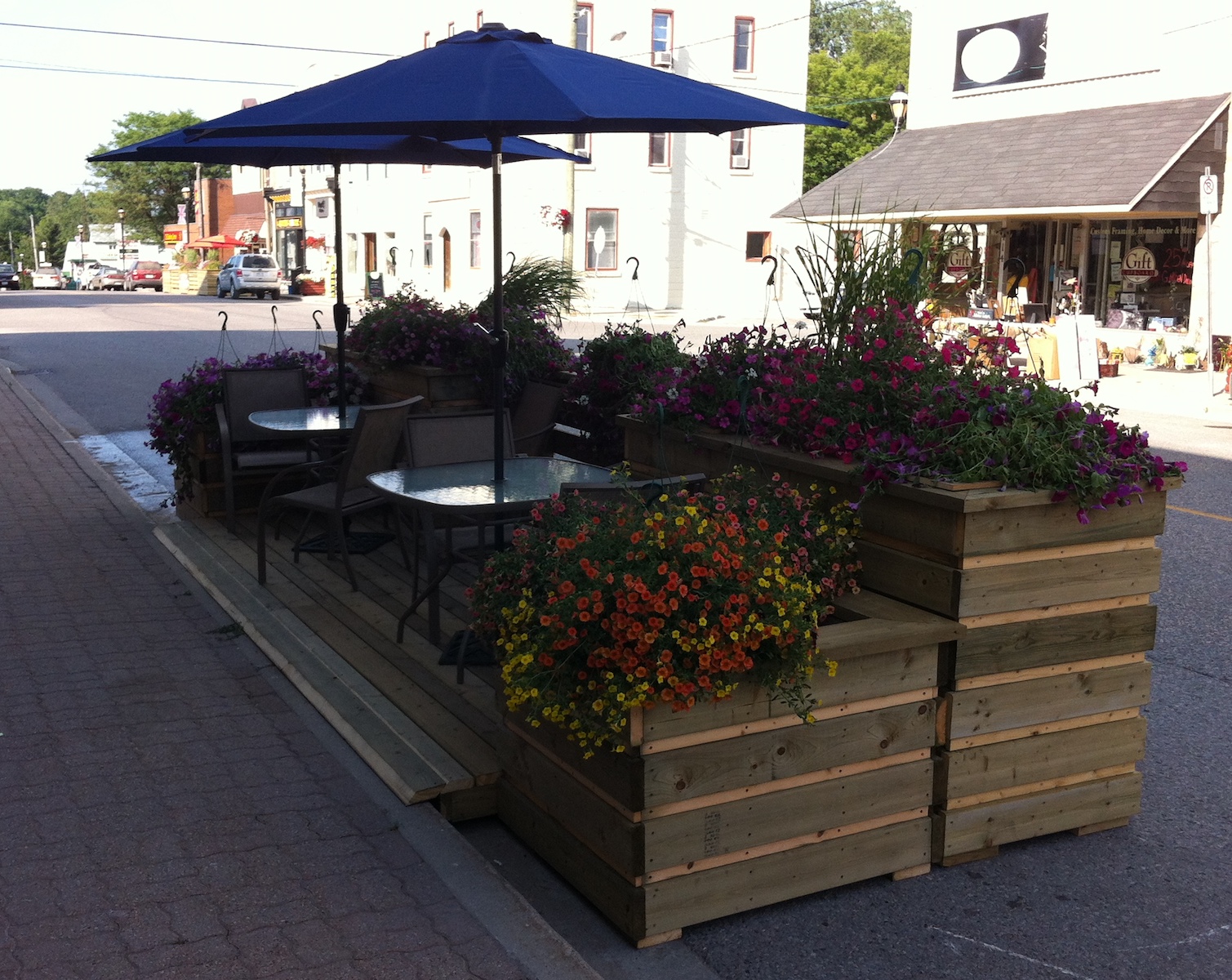Well, we know that downtowns are about people, moving to and fro between their work, services they require, and retail opportunities. If they are lucky, it is all within walking distance of their residence.
It works in rural areas as well as urban ones, especially western rural Ontario where the density of the downtown was laid in the early 20 century. When people lived exactly, in what we now call, a walkable community with the occasional horse and cart rolling by. Fast forward 100 years and we still crave that life, in fact, we are looking to get back to that lifestyle. The horse and cart have been replaced by cars and parking spaces, and as developers, Downtown Revitalization has become the tactic of getting people out of their cars, to walk about.
Problem: So what if you are revitalizing a downtown in rural Ontario that has a storefront occupancy rate of about 60% in 2011 by the name of Blyth Ontario? The Blyth Festival has 30,000 tickets sold a year (to tourists) right on Mainstreet, but very few of those patrons spent much time or money in the greater community.
Solution: Extend the hours of the theater experience with street vibrancy!
How does one do so? Recruit, build, champion entrepreneurs that can fill the remaining 40% with a vibrant and complementary experience to the theatre; also—-create a vibrancy, with multiple services and retail opportunities to encourage coming early and staying late.
Downtown Revitalization starts with understanding what a community’s strengths are. Blyth understood its strengths and with some coaxing went with it. By the summer of 2012, we had two new start-ups; the Queen’s Bakery and Part II Bistro, whose business models targeted “extending the hours” of theater experience, Blyth had formed a business improvement area (BIA) and had tripled daytime foot traffic and quadrupled foot traffic in the 2 hours preceding curtain call at the theater. Blyth even rebranded the downtown (twice! but that is another post).
An architecture firm and private gallery even set up shop on the main street—-because of the walkability and a revitalized sense of place.
Why stop there? You could not find a table or room in the Bakery or the Bistro before the show four nights a week. We had run out of the sidewalk. So a few entrepreneurs; Peter Gusso, from “Part II Bistro”, Rick Elliot from the “Queens Bakery” and I put on our tool belts, ordered some wood from the local hardware store and built out onto the street!
We called it a “Park-Let” and since we are not professional engineers we hired Stantec’s office in London Ontario; they worked with us and provided a stamped drawing and a simple, but poignant, comment of “cool”. We built it in an afternoon in an alley behind the carwash, and set it into place with a tractor we flagged down on Mainstreet (YES really).
Why we involved Stantec:
1) For safety
2) I considered this due diligence as an economic development professional; taking it to three levels of government as it turned out, for permission to place on Mainstreet.
As you can see by the photo we were successful in doing so. So the build took us an afternoon and the policy drafting, the changing of mindsets and addressing concerns took two months of writing letters and advocating as an economic developer.
Why go to all of this trouble? For two start-ups in rural Ontario?
First it was my job, but more importantly, it bettered the community of Blyth!
The Quantitative results were: six more two top tables per hour per day throughout the peak hours of the festival season.
The Qualitative: A great sense of place! And people out of their cars ….The overall results, over two years of disruptive policy writing, development practice and carpentry work? A downtown full and tourists and locals going to and fro between their work, services they require, and retail opportunities, extended the Blyth experience to one worth living, be if just for an evening experience or for life.
A great downtown revitalization project that continues today,
